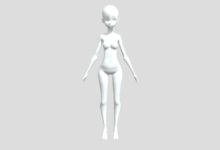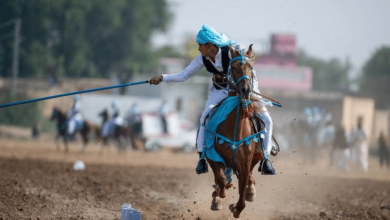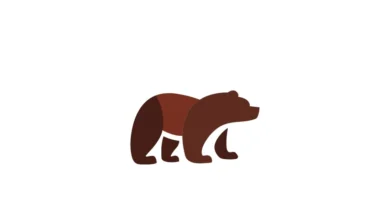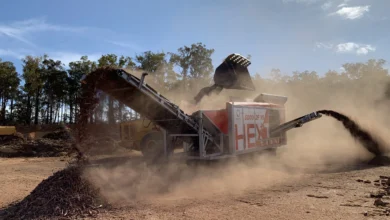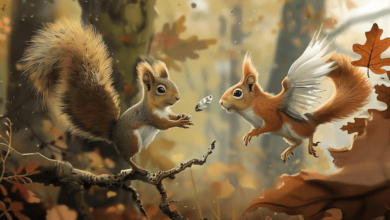What is the ideal breed of horse for pole bending?
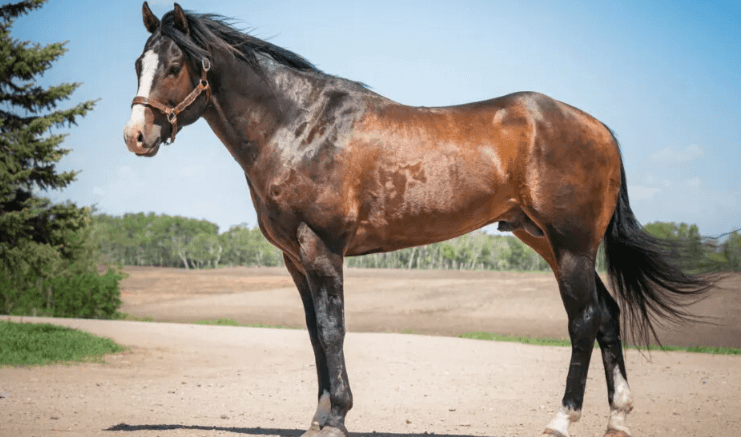
Exploring Pole Bending: A Fast-Paced Rodeo Sport
Pole bending is a thrilling rodeo sport that tests the agility and speed of a horse as it navigates a series of poles arranged in a line. This event requires a horse to weave in and out of six poles arranged in a straight line at a full gallop, making sharp turns at high speeds.
Key Traits for Top Pole Bending Horses
The ideal horse for pole bending must possess:
- Speed: To compete effectively, the horse must be quick.
- Agility: The ability to make sharp turns and rapid direction changes is crucial.
- Temperament: A calm yet responsive disposition is needed to handle the intense atmosphere of rodeo events.
- Physique: A strong, athletic build enables the horse to endure the physical demands of the sport.
The American Quarter Horse: A Front Runner
The American Quarter Horse is the most favored breed for pole bending due to its powerful build and exceptional sprinting capabilities. This breed’s compact size and muscular structure make it ideal for making the quick, tight turns required in pole bending.
Paint Horse: Beauty and Agility Combined
Paint Horses, known for their distinctive color patterns and common lineage with Quarter Horses, also excel in pole bending. They share many of the physical characteristics of Quarter Horses that make them suitable for this sport, including strength, agility, and a solid temperament.
Appaloosa: Distinguished by Stamina
The Appaloosa is celebrated for its stamina and agility, both of which are advantageous in pole bending. Their unique coat patterns and sturdy build, coupled with their fearless nature, make them excellent candidates for the sport.
Arabian Horse: The Agile Performer
Though less common in pole bending, Arabian horses can be competitive due to their endurance, intelligence, and agility. Their ability to learn quickly and adapt to different sports makes them a versatile choice for experienced riders.
Training Techniques for Success in Pole Bending
Effective training is crucial for preparing a horse for pole bending:
- Skill Development: Focus on enhancing the horse’s speed, flexibility, and response to commands.
- Agility Exercises: Implement routines that improve the horse’s ability to navigate tight turns.
- Consistency and Patience: Regular, consistent practice sessions are key to developing proficiency.
Essential Gear for Pole Bending Competitions
The right equipment can significantly impact performance and safety:
- Saddles and Tack: Lightweight saddles that provide stability and comfort.
- Protective Gear: Boots and wraps to protect the horse’s legs during sharp turns and sprints.
- Fitting Bridles and Bits: To ensure control without compromising the horse’s comfort or responsiveness.
Selecting the Right Horse for Pole Bending
Choosing a horse for pole bending involves assessing both the horse’s physical capabilities and its compatibility with the rider. It is important to consider the horse’s training history, temperament, and physical health.
Maintaining a Pole Bending Horse
Keeping a horse competition-ready involves:
- Nutritional Care: A balanced diet tailored to the horse’s energy needs.
- Health Management: Regular check-ups, vaccinations, and attention to any signs of wear or injury.
- Mental Well-being: Ensuring the horse has ample rest and a varied routine to stay sharp and engaged.
Conclusion
The ideal breed for pole bending typically includes the American Quarter Horse, Paint Horse, Appaloosa, and occasionally the Arabian. These breeds are favored for their speed, agility, and temperament—qualities that are essential for success in pole bending. However, regardless of breed, training, and care play pivotal roles in preparing a horse for the challenges of this exciting sport.

